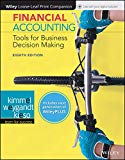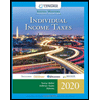
(a)
Financial Ratios: Financial ratios are the metrics used to evaluate the overall financial performance of a company during a specific period of time.
To explain: the difference in the return on assets and the assets turnover of Company B from an online retailer.
(a)
Explanation of Solution
In the present case, Company B once the largest retailer of electronics lost its position to the online retailers of electronics. Thus, its profitability faced a drastic fall over the years, and the very survival was at stake. Since the growth of online retailers for electronics, whose return on assets, and assets turn over gaineddominance overtime, in comparison to Company B due to the following reasons:
- The customers can easily compare the expensive and non-expensive electronics online.
- The customers find it easy to order online as they do not have to spend extra hours in collecting their purchases from the stores.
- As, the online retailers do notlevy sales tax to the customers, their sales and profits surge on being less expensive for the customers than Company B.
- The online retailers are in an advantageous position as they do not incur much operating costs for running their stores. Thus, it further boosts up their net income thereby, increasing their profit margin.
- The online retailers have less total assets that increase their asset turnover and return on assets.
(b)
To Compute: the profit margin, asset turnover and return on assets of Company B for 2017 and 2012.
(b)
Explanation of Solution
Compute the profit margin, asset turnover and return on assets of Company B for 2017 and 2012.
| Title: Compute the ratios | ||
| Formula | 2017 | 2012 |
|
|
|
|
|
|
|
|
|
|
|
|
Table (1)
Working notes:
Compute the average total assets for Company B for the year 2017.
Beginning total assets =$17,849
Ending total assets =$18,302
Compute the average total assets for Company B for the year 2012.
Beginning total assets =$11,864
Ending total assets =$10,294
Return on assets is used to measure the overall earning ability of the company. Thus, it shows the relationship between the net income and the average total assets.
Profit Margin: It measures the amount of net income earned from each dollar of sales revenue generated by a company. Thus, it shows the relationship between the net income and net sales.
Asset turnover is ratio that measures the productive capacity of the assets to generate the sales revenue for the company. Thus, it shows the relationship between the net sales, and the average total assets.
The profit margin, asset turnover and return on assets of Company B for 2017 and 2012 are as follows:
2017:
Profit margin =2.5%
Asset turnover =2.78 times
Return on Assets =7.1%
2012:
Profit margin =3.7%
Asset turnover =2.78 times
Return on Assets =10.3%
(c)
To present: The profit margin, asset turnover, and the return assets in the equation format.
(c)
Explanation of Solution
Present the profit margin, asset turnover, and the return assets in the equation format.
For the year 2012:
For the year 2017:
(d)
To discuss: the implications of the profit margin, asset turnover, and the return assets ratios.
(d)
Explanation of Solution
The implications of the ratiosprofit margin, asset turnover, and the return assets calculated in part b and part c are as follows:
- The profit margin of Company B has been reduced from 3.7% to 2.5% from the year 2012 as compared to 2017.
- The return on assets also reduced in the same period from 10.3% to 7.1%. It resulted from the reduced percentage of profit margin from 2012 to 2017.
- However, the asset turnover remains unchanged at 2.78 for both the years. It implies that the company generated same amount of sales revenue out of the invested assets.
- It can be concluded that Company B is going through a hard time as the degree of competition with the online retailers is very high.
- Unlike online retailers, the company cannot reduce its selling price to compete with the online retailers as it would reduce its profit margin.
- Moreover, the company cannot survive with low profit margin in the long run as it has to meet its operating costs.
Want to see more full solutions like this?
Chapter 9 Solutions
Financial Accounting: Tools for Business Decision Making, 8e WileyPLUS (next generation) + Loose-leaf
- A firm sells 2,800 units of an item each year. The carrying cost per unit is $3.26 and the fixed costs per order are $74. What is the economic order quantity? (Please round units to the nearest whole number)arrow_forwardA company sold goods for $12,000 on credit and later allowed a sales return of $2,000. Calculate the net sales to be reported in the income statement and explain the reasoning behind adjusting for returns. HELParrow_forwardConversion cost per unit equals $6. Total materials costs equal $60,000. Equivalent units for materials are 12,000. How much is the total manufacturing cost per unit?arrow_forward
- Please explain the solution to this financial accounting problem with accurate explanations.arrow_forwardI need help with this general accounting problem using proper accounting guidelines.arrow_forwardDuring the year ended December 31, 2023, Ever glow Technologies Inc. earned$3,950,000 in net income after taxes. The company reported $278,000 of net unrealized gains on available-for-sale securities (net of taxes), and $190,000in foreign currency translation gains from the consolidation of its Canadian subsidiary (net of taxes). Prepare the Statement of Comprehensive Income for Ever glow Technologies Inc. for the year ended December 31, 2023. (In Table Format)arrow_forward
- Please provide the accurate answer to this financial accounting problem using appropriate methods.arrow_forwardI need help with this general accounting problem using proper accounting guidelines.arrow_forwardAt the high level of activity in August, 6,000 machine hours were run and power costs were $11,000. In February, a month of low activity, 2,500 machine hours were run and power costs amounted to $6,250. Using the high-low method, what is the estimated fixed cost element of power costs? a. $3,250 b. $4,000 c. $2,840 d. $6,600arrow_forward
 Cornerstones of Financial AccountingAccountingISBN:9781337690881Author:Jay Rich, Jeff JonesPublisher:Cengage Learning
Cornerstones of Financial AccountingAccountingISBN:9781337690881Author:Jay Rich, Jeff JonesPublisher:Cengage Learning Intermediate Financial Management (MindTap Course...FinanceISBN:9781337395083Author:Eugene F. Brigham, Phillip R. DavesPublisher:Cengage Learning
Intermediate Financial Management (MindTap Course...FinanceISBN:9781337395083Author:Eugene F. Brigham, Phillip R. DavesPublisher:Cengage Learning
 Financial Accounting: The Impact on Decision Make...AccountingISBN:9781305654174Author:Gary A. Porter, Curtis L. NortonPublisher:Cengage Learning
Financial Accounting: The Impact on Decision Make...AccountingISBN:9781305654174Author:Gary A. Porter, Curtis L. NortonPublisher:Cengage Learning Individual Income TaxesAccountingISBN:9780357109731Author:HoffmanPublisher:CENGAGE LEARNING - CONSIGNMENT
Individual Income TaxesAccountingISBN:9780357109731Author:HoffmanPublisher:CENGAGE LEARNING - CONSIGNMENT





